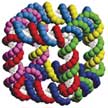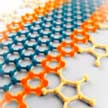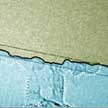Showing Spotlights 801 - 808 of 2879 in category All (newest first):
 The Belgian federal government unnecessarily delayed the adoption of the Amending Royal Decree until December 2017 and published it only mid-January 2018. It creates legal uncertainty where it should have been avoided. The Belgian nanomaterials register symbolizes a Belgian exceptionalism in the small world of national nanomaterials registers. Unlike France, Denmark and Sweden, Belgium decided from the very beginning to have three different deadlines for substances, mixtures and articles.
The Belgian federal government unnecessarily delayed the adoption of the Amending Royal Decree until December 2017 and published it only mid-January 2018. It creates legal uncertainty where it should have been avoided. The Belgian nanomaterials register symbolizes a Belgian exceptionalism in the small world of national nanomaterials registers. Unlike France, Denmark and Sweden, Belgium decided from the very beginning to have three different deadlines for substances, mixtures and articles.
Feb 26th, 2018
 The past two decades have witnessed the evolution of advanced physical probe-based nanolithography techniques for molecular printing such as for instance Dip-Pen Nanolithography. Now, researchers have demonstrated, for the first time, photo-actuated polymer pens for molecular printing. This represents an important step in the field of scalable nanofabrication. It paves the way for dynamic actuation of individual pens, making it possible to realize patterning and printing molecules or other soft materials such as polymers or biomaterials at high resolution and low cost.
The past two decades have witnessed the evolution of advanced physical probe-based nanolithography techniques for molecular printing such as for instance Dip-Pen Nanolithography. Now, researchers have demonstrated, for the first time, photo-actuated polymer pens for molecular printing. This represents an important step in the field of scalable nanofabrication. It paves the way for dynamic actuation of individual pens, making it possible to realize patterning and printing molecules or other soft materials such as polymers or biomaterials at high resolution and low cost.
Feb 23rd, 2018
 Bagasse, a waste plant matter obtained by food industry processes such as sugarcane processing, has great potential as raw material for the production of cellulose nanofibrils (CNF) for a range of applications. Researchers now have developed a CNF ink from bagasse that has potential as component in bioinks for 3D printing. Bioinks are inks that contain living cells and that can be 3D printed in a cell-friendly manner, without compromising cell viability.
Bagasse, a waste plant matter obtained by food industry processes such as sugarcane processing, has great potential as raw material for the production of cellulose nanofibrils (CNF) for a range of applications. Researchers now have developed a CNF ink from bagasse that has potential as component in bioinks for 3D printing. Bioinks are inks that contain living cells and that can be 3D printed in a cell-friendly manner, without compromising cell viability.
Feb 22nd, 2018
 DNA, the fundamental building block of our genetic makeup, has become an intense nanotechnology research field. Nanotechnology researchers use it to create artificial rationally designed nanostructures for diverse applications in biology, chemistry, and physics. In a progress report, scientists focus on the different design paradigms (DNA origami and the related techniques are particularly emphasized), selected high-quality shapes, and the software that enable user-friendly design and fabrication of DNA nanoobjects.
DNA, the fundamental building block of our genetic makeup, has become an intense nanotechnology research field. Nanotechnology researchers use it to create artificial rationally designed nanostructures for diverse applications in biology, chemistry, and physics. In a progress report, scientists focus on the different design paradigms (DNA origami and the related techniques are particularly emphasized), selected high-quality shapes, and the software that enable user-friendly design and fabrication of DNA nanoobjects.
Feb 20th, 2018
 Tuning adhesion without relying on chemical treatment or micro or nanostructured surfaces is now closer with a novel, kirigami-inspired approach. New research shows that by carefully designing arrays of cuts in an adhesive film, the stickiness can not only be tuned by a factor of 100 across a single sheet, but also be decreased for an easy-release purpose. These kirigami-inspired structures at interfaces provide a mechanism to spatially control and enhance adhesion strength while providing directional characteristics for high-capacity, easy-release interfaces.
Tuning adhesion without relying on chemical treatment or micro or nanostructured surfaces is now closer with a novel, kirigami-inspired approach. New research shows that by carefully designing arrays of cuts in an adhesive film, the stickiness can not only be tuned by a factor of 100 across a single sheet, but also be decreased for an easy-release purpose. These kirigami-inspired structures at interfaces provide a mechanism to spatially control and enhance adhesion strength while providing directional characteristics for high-capacity, easy-release interfaces.
Feb 19th, 2018
 Scientists report a systematic study involving theoretical and experimental approaches to evaluate the Li-ion storage capability in 2D atomic sheets of nonlayered MoO2. They describe a new process - polymer-assisted reduction - to make atomically flat 2D sheets of MoO2. Since MoO2 is not a 2D material, this process opens a new pathway to make 2D nanostructures from non-layered materials. By successfully making 2D atomic sheets of MoO2, the researchers fabricated a battery electrode in which the Li ion diffusion and electron transport are exceptionally fast.
Scientists report a systematic study involving theoretical and experimental approaches to evaluate the Li-ion storage capability in 2D atomic sheets of nonlayered MoO2. They describe a new process - polymer-assisted reduction - to make atomically flat 2D sheets of MoO2. Since MoO2 is not a 2D material, this process opens a new pathway to make 2D nanostructures from non-layered materials. By successfully making 2D atomic sheets of MoO2, the researchers fabricated a battery electrode in which the Li ion diffusion and electron transport are exceptionally fast.
Feb 15th, 2018
 Cellulose aerogels, made from nanofibrils found in plants, have several unique features, one of which is super high oil absorption capacity that is several times higher than commercial sorbents available in the market. Researchers have created wood-based structures for oil/water separation, utilizing the native feature of wood, i.e. its tubular porosity and hierarchical organization. The novelty here is the development of new processing routes for hierarchical wood structures scaled from nano-, micro-, to macroscales.
Cellulose aerogels, made from nanofibrils found in plants, have several unique features, one of which is super high oil absorption capacity that is several times higher than commercial sorbents available in the market. Researchers have created wood-based structures for oil/water separation, utilizing the native feature of wood, i.e. its tubular porosity and hierarchical organization. The novelty here is the development of new processing routes for hierarchical wood structures scaled from nano-, micro-, to macroscales.
Feb 14th, 2018
 Researchers have looked closer at the Hall effect in narrow graphene devices - so-called graphene nanoribbons and nanoconstrictions. They were puzzled when they found that the quantization of the conductance was destroyed in some samples - especially because these particular samples were optimized for low edge disorder and low contamination. As it turned out, this effect had been predicted by several theoretical physicists twenty years ago, but largely ignored since no experimental evidence was ever found.
Researchers have looked closer at the Hall effect in narrow graphene devices - so-called graphene nanoribbons and nanoconstrictions. They were puzzled when they found that the quantization of the conductance was destroyed in some samples - especially because these particular samples were optimized for low edge disorder and low contamination. As it turned out, this effect had been predicted by several theoretical physicists twenty years ago, but largely ignored since no experimental evidence was ever found.
Feb 13th, 2018
 The Belgian federal government unnecessarily delayed the adoption of the Amending Royal Decree until December 2017 and published it only mid-January 2018. It creates legal uncertainty where it should have been avoided. The Belgian nanomaterials register symbolizes a Belgian exceptionalism in the small world of national nanomaterials registers. Unlike France, Denmark and Sweden, Belgium decided from the very beginning to have three different deadlines for substances, mixtures and articles.
The Belgian federal government unnecessarily delayed the adoption of the Amending Royal Decree until December 2017 and published it only mid-January 2018. It creates legal uncertainty where it should have been avoided. The Belgian nanomaterials register symbolizes a Belgian exceptionalism in the small world of national nanomaterials registers. Unlike France, Denmark and Sweden, Belgium decided from the very beginning to have three different deadlines for substances, mixtures and articles.
 Subscribe to our Nanotechnology Spotlight feed
Subscribe to our Nanotechnology Spotlight feed





